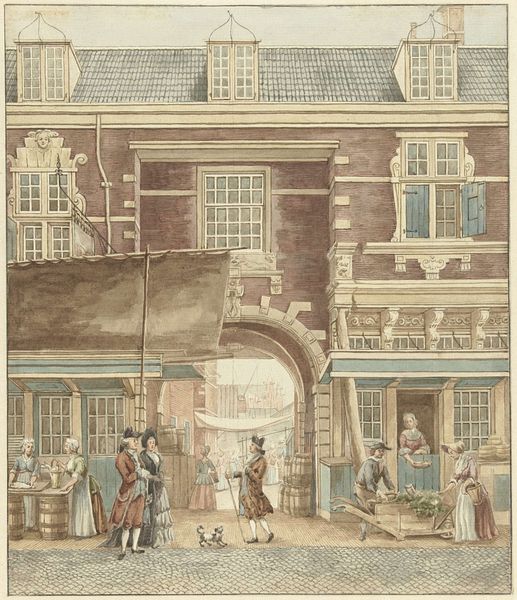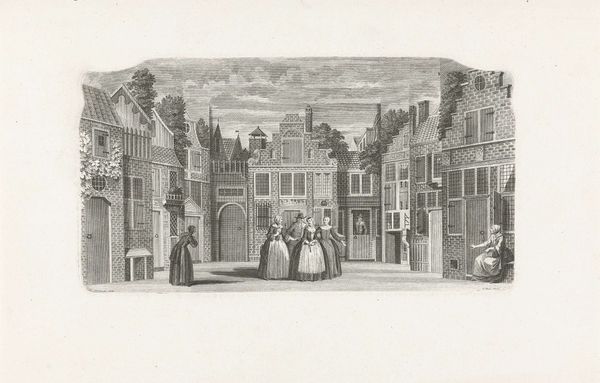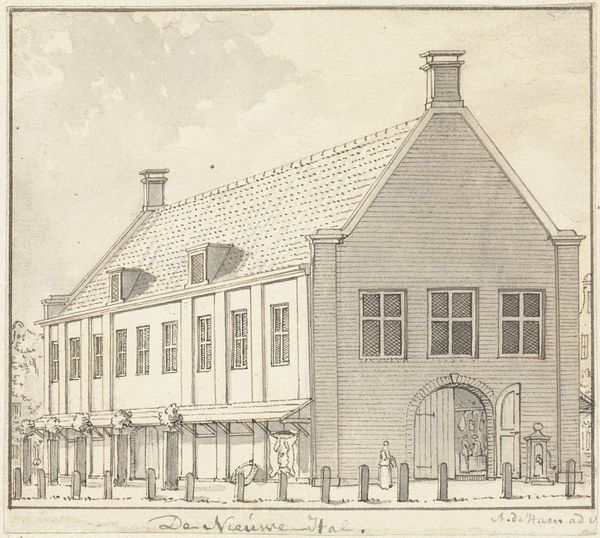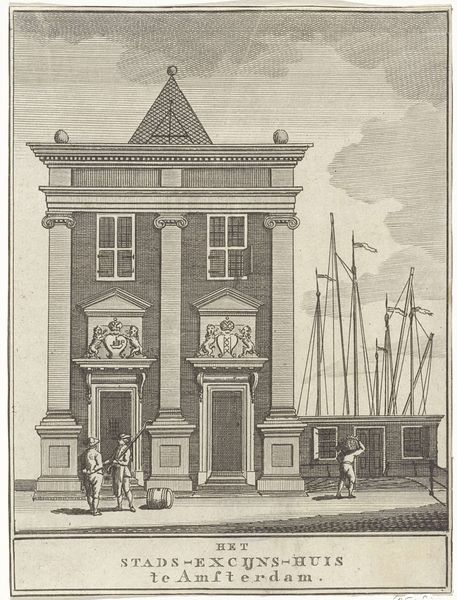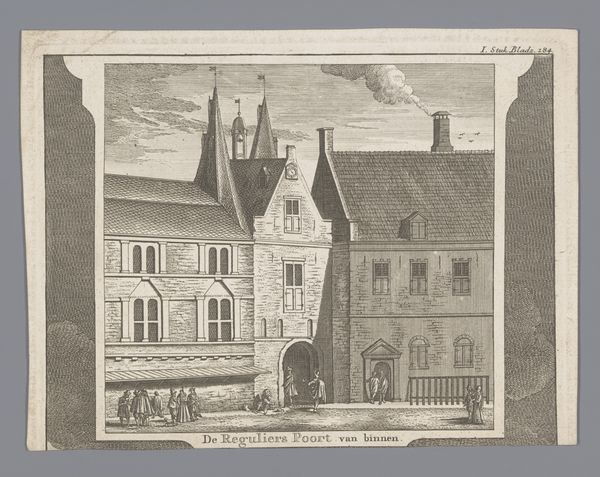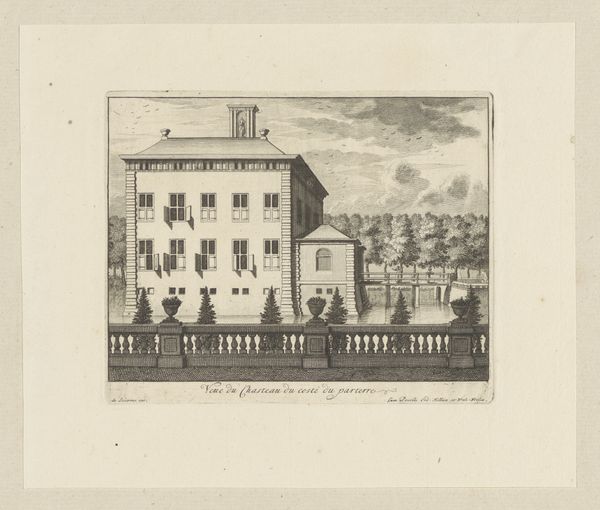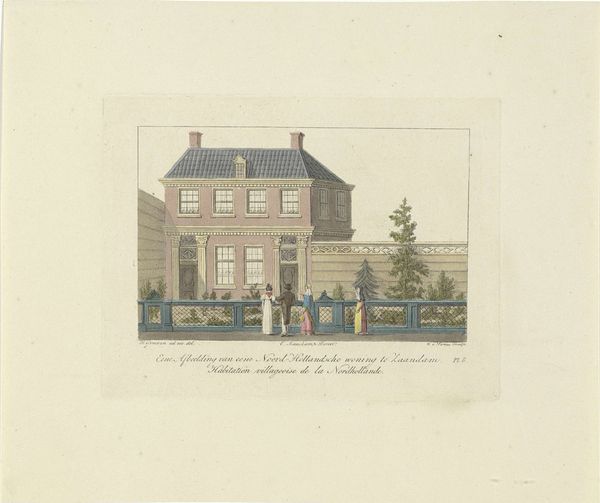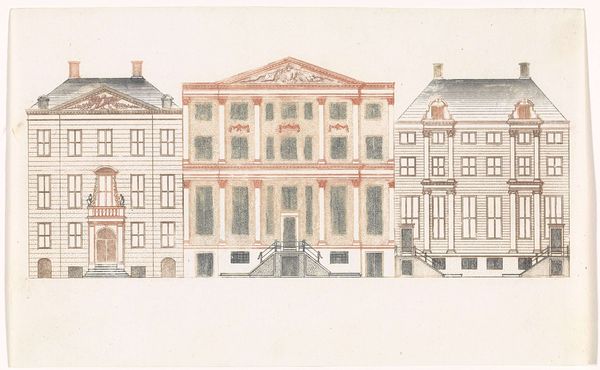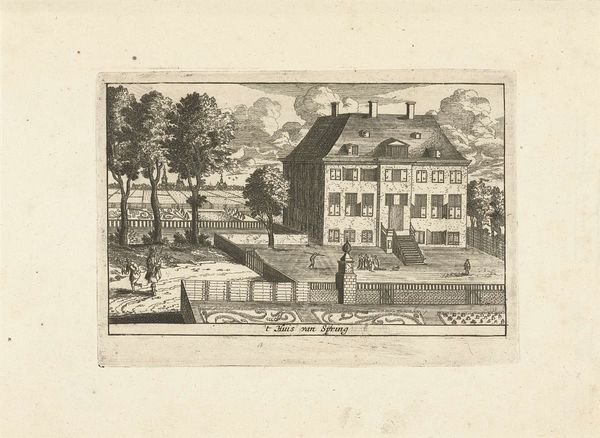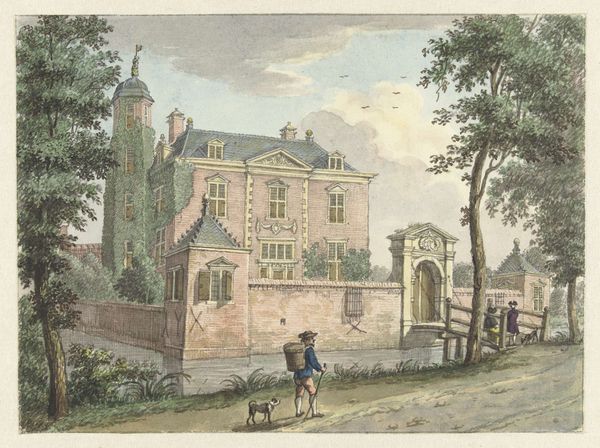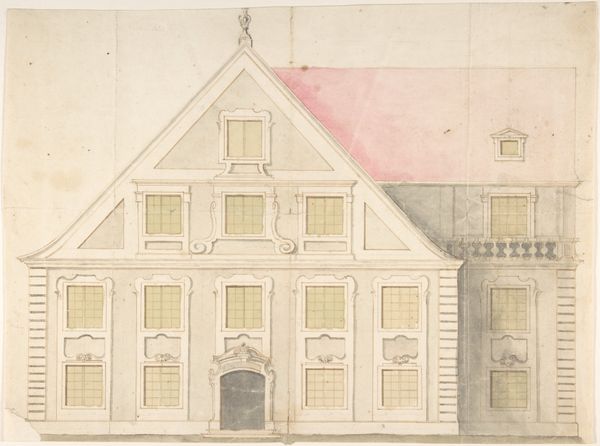
drawing, paper, watercolor, ink
#
portrait
#
drawing
#
neoclacissism
#
paper
#
watercolor
#
ink
#
romanticism
#
cityscape
#
genre-painting
Dimensions: height 128 mm, width 173 mm
Copyright: Rijks Museum: Open Domain
Curator: Here we have Willem van Senus’s “Pand aan Oostzijde 219 te Zaandam, 1824,” a delicate dance of ink and watercolor on paper. What springs to mind for you? Editor: Well, the green is undeniably the star, isn't it? Almost unsettlingly uniform. It flattens the entire facade, sucking the life out of any natural texture. Curator: Interesting. For me, that verdant uniformity hints at something deeply cultivated, even a little performative. It's a controlled landscape. You see it rendered so meticulously, echoing the neo-classical obsession with order. But, the figures soften it; do you see how they add a touch of genre painting to the cityscape? Editor: Ah, but look closer at those figures, will you? They’re stock types, stiffly arranged, serving more to denote social standing than embodying real presence. Their clothing and postures—pure staging, just to display this property as some idyllic image of wealth and class. The social function overwhelms any emotional depth. Curator: Maybe. Or, perhaps van Senus intended to highlight the symbiotic relationship between inhabitants and their homes. Do you see the almost gentle inclination in each figure's form? They seem as carefully placed as the very blooms climbing that delightful fence. What does that tell you of their everyday life? Editor: It speaks of social expectations, of labor masked behind refinement. Consider the actual construction—the transport of materials, the meticulous layering of pigment, the precise hand that drafted those classical details. It is a monument to industry as much as artistry, all conveniently concealed beneath this placid, genteel surface. And, ultimately, what is the social story of the location? What purpose does this 'drawing' serve beyond being visually appealing? Curator: So, the real artistry, for you, is in revealing those hidden efforts? Editor: Precisely. The drawing is lovely but incomplete without acknowledging its role as cultural artifact. I can now better acknowledge that building as part of its neighbourhood—one home of countless homes in that part of town—rendered unique but connected by location and by its place as an artifact to admire. Curator: A fascinating perspective! Perhaps it shows that this building and drawing’s truth lies somewhere in our combined observations. A material creation that inspires uniquely different and beautiful reflection.
Comments
No comments
Be the first to comment and join the conversation on the ultimate creative platform.
